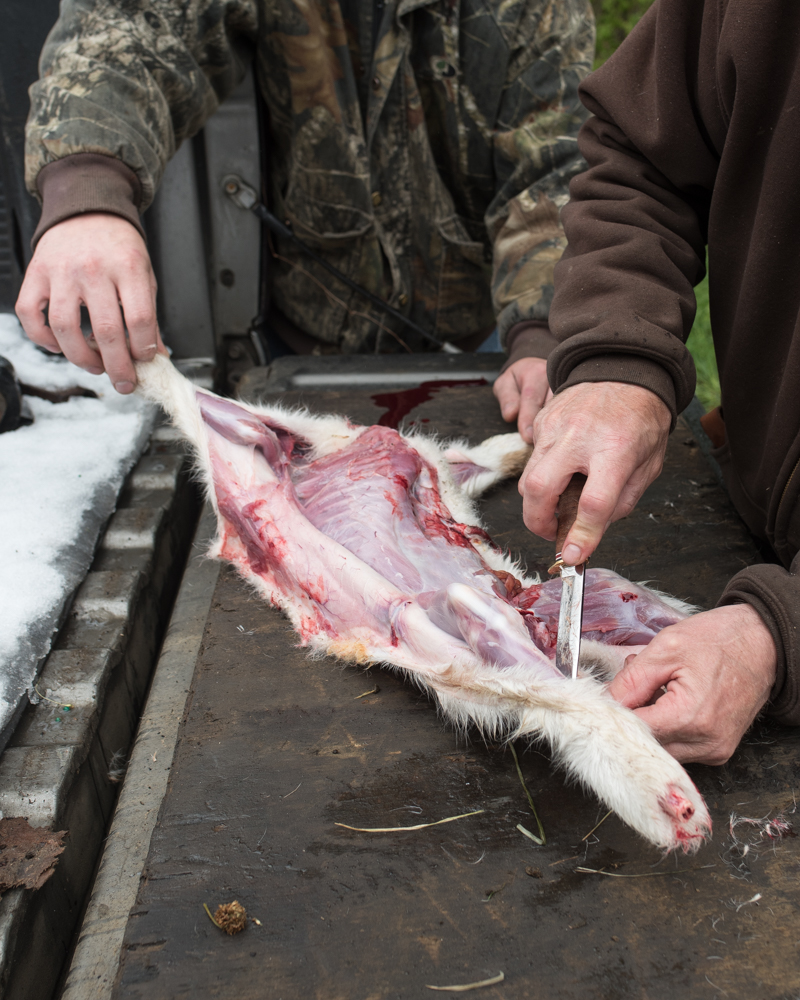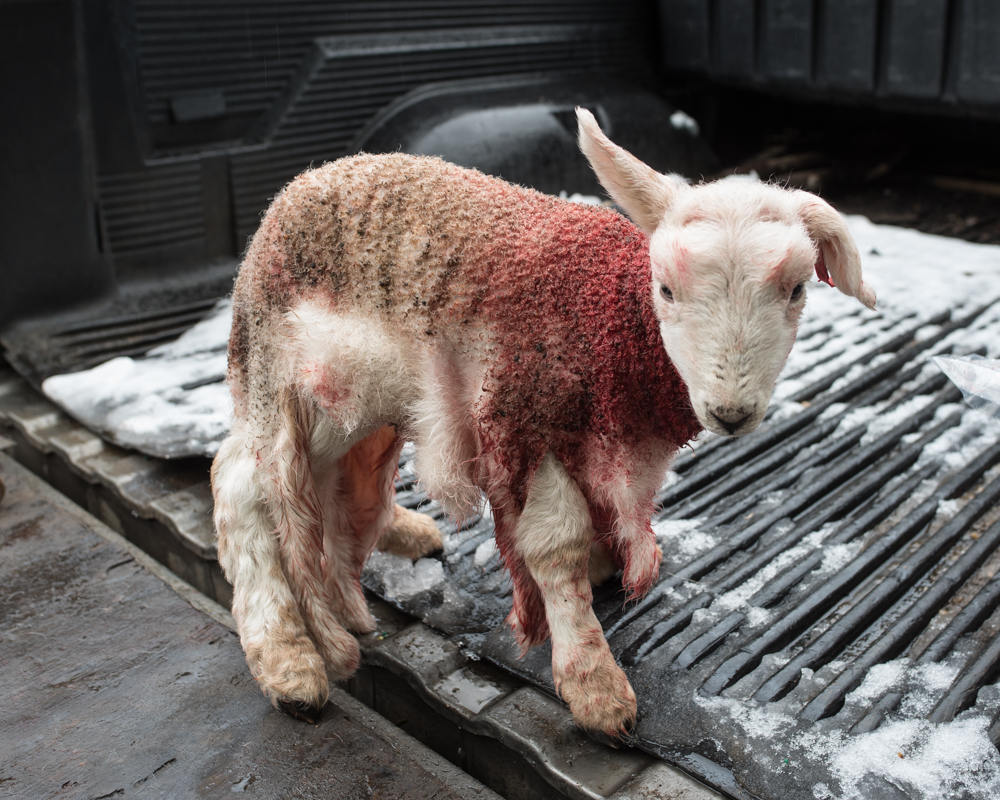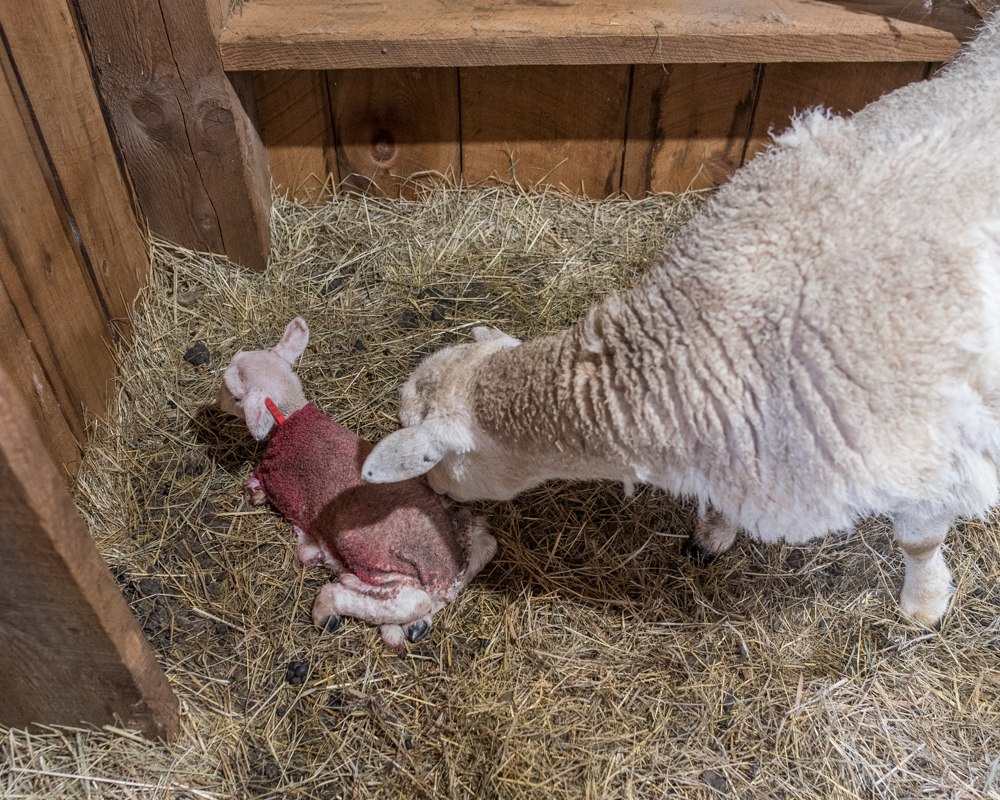Apologies in advance to squeamish readers — today’s post probably isn’t going to work for you. As I’m getting ready to start breeding for next year’s lambs (Bill and I will be setting up breeding groups on Saturday), I’ve been thinking back on this year’s lambing, the things that went well and those that didn’t. The low point of spring lambing was the surprise snowstorm in the middle of May when I lost three lambs to hypothermia; two had already died when I went out to check in the morning, but I haven’t written about my efforts to save the third.
The day before the storm, one of the Dorper-Cheviots had given birth to triplets, but the third one was born enough later than the other two that the ewe rejected it. I tried to restrain the ewe so that she’d allow the third lamb to nurse, but between her antipathy and competition from the other 2 (stronger) lambs, #3 was losing ground. When the katahdin ewe lost her twins in the snowstorm, I decided to try grafting the rejected triplet onto the newly lambless ewe. It seems like a perfect fit — a disconsolate ewe with tons of milk and a hungry lamb rejected by its mother — but there’s always a catch. Sheep have evolved to take very good care of their own lambs and reject the offspring of others, an adaptation to ensure that their resources (milk) support the survival of their kin and are not hijacked by unrelated animals. Ewes primarily confirm the identity of their own lambs by smell, so the trick to convincing a ewe to adopt another’s lamb is to make it smell like her own.
In a perfect world, the adopting mother would have just given birth; the shepherd could rub some of the birth fluid on the orphaned lamb, the ewe would confirm that the smell was right, and allow the orphan to nurse. Once nursing, the adoptive mother’s milk makes the orphan smell more “right”, the bond strengthens, and the lamb thrives. In a less-perfect world, the easy trickery doesn’t happen, and this is where things get weird. There’s a long tradition of disguising the orphaned lamb in the skin of the deceased one in an effort to create a more convincing deception. I had read about this technique and was certain I’d never try such a thing, but a starving hypothermic lamb is a powerful motivator. It turns out that my friend Mark used to work for a taxidermist and felt confident he could skin one of the the frozen lambs, so we decided to give it a shot.

I did my best to dress the orphan as naturally as possible,

and introduced him to the lambless ewe.

I was shocked that the fraud seemed to be working, as the ewe did not immediately reject the lamb. In different circumstances, the ruse might have actually worked. In this case, I was never able to get the lamb warm enough to start digesting food again, despite spending hours heating him gently with a hair dryer. By the next morning, he had also died of hypothermia.
As I think back on that weekend of snow and dead lambs, it feels like a distant hallucination rather than something I was intimately involved in 6 months ago. I spent many days afterwards reviewing and second-guessing the decisions I made those 2 days, trying to convince myself both that I could have saved all the lambs and that there was nothing I could have done to change the outcome. I tried to write about my efforts on behalf of the orphan in the days after he died, but it felt too raw at the time. With the cycle starting again, the story feels like a useful antidote to romantic notions of farming.
Tagged: dead lambs, deception, grafting, hypothermia, inconsolate, lambing, lambless ewe, Mark Smith, orphan, ruse, snow, taxidermy